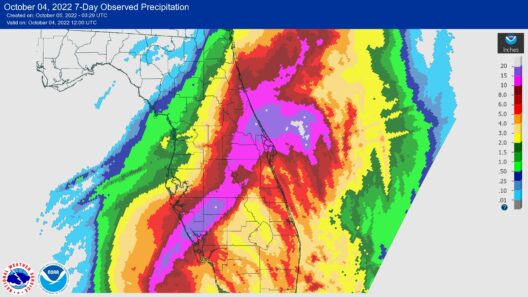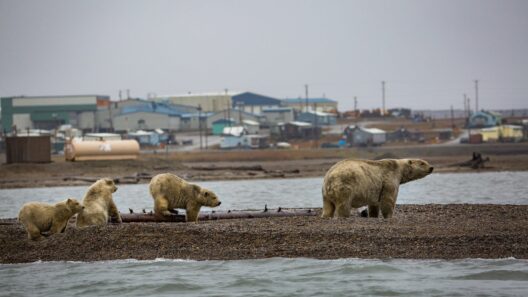In the grand tapestry of life on Earth, respiration serves as a fundamental thread, intertwining the fates of humans, plants, and the very atmosphere we breathe. This phenomenon, though seemingly mundane, is a profound dance of molecules, showcasing the intricate interplay between life and the planet’s climate systems. As we inhale oxygen and exhale carbon dioxide, a deeper narrative unfolds, one that reaches far beyond our immediate existence.
At the heart of respiration lies carbon—a mere atom that has wielded immense influence over the biosphere. It forms the backbone of organic compounds and serves as the currency of life. In the cycle of respiration, carbon dioxide (CO₂) is released as a byproduct of energy utilization. This basic biological process indicates a crucial relationship: our existence, heavily reliant on carbon, has profound implications for the Earth’s temperature regulation. Yet, this relationship is not a mere coincidence but a dynamic equilibrium that has been disrupted.
As atmospheric carbon levels rise, primarily due to anthropogenic activities such as fossil fuel combustion and deforestation, a more worrying narrative emerges. The specter of climate change looms large, manifesting through global temperature increases. This linkage between respiration, carbon emissions, and rising temperatures can be likened to a well-tuned orchestra where a single discordant note can lead to catastrophic disarray. The atmosphere—our vital protective blanket—responds to these increasing carbon concentrations with alarming efficiency, both in warming the Earth and altering its climatic patterns.
To understand the mechanics of this process, one must delve into the concept of the greenhouse effect. Just as a greenhouse traps heat to nurture plants, certain gases in our atmosphere capture the sun’s warmth, preventing it from escaping back into space. Carbon dioxide, along with methane and nitrous oxide, comprises these greenhouse gases. As carbon emissions flood the atmosphere, they enhance this natural effect, leading to a dramatic rise in global temperatures—a phenomenon that can be likened to a pot placed on a stove, gradually boiling over as the heat intensifies.
Scientific illumination provides unequivocal evidence of this warming trend. Recorded global temperature averages illustrate a marked increase over the past century, a rise that transcends natural variability. Each increment is not simply a statistic; it incarnates the ramifications for ecosystems, violent weather patterns, and rising sea levels—a triad of consequences that directly affect every living organism on our planet. The warming climate thus becomes a harbinger, a warning of imminent disturbances to the delicate balance sustains life.
The unique role of carbon takes on further significance as it permeates beyond respiration, connecting diverse ecological spheres through biogeochemical cycles. The carbon cycle illustrates nature’s ingenious method of recycling carbon, where carbon is sequestered in forests, oceans, and soil, only to be released again through organisms’ respiration or combustion of organic matter. Herein lies a contradiction; while forests, like lungs, absorb CO₂ and produce oxygen, rampant deforestation disrupts this benevolent carbon sink, releasing stored carbon and exacerbating the greenhouse effect.
Moreover, the interaction of carbon with oceans invites further complexity. Oceans act as a critical buffer against climate change by absorbing a sizeable portion of atmospheric CO₂. However, this beneficial exchange introduces an unsettling twist: ocean acidification. As CO₂ levels rise, oceans become more acidic, posing a dire threat to marine ecosystems, particularly coral reefs—often revered as the rainforests of the sea. This unsettling reality magnifies the urgency of mitigating carbon emissions; failure to act could unravel the very fabric of marine biodiversity.
Furthermore, the anthropogenic contributions to carbon emissions extend beyond the confines of urban landscapes. Agricultural practices, including livestock raising, release significant quantities of methane—a greenhouse gas that packs a far more potent punch than carbon dioxide, albeit for a shorter duration. This agricultural carbon footprint highlights the complexity and interconnectivity of our actions. Decisions made in one sphere impact broader environmental outcomes, underlining the dire need for holistic approaches to environmental sustainability.
The ominous trajectory of carbon concentrations is manifesting a cascade of consequences: extreme weather events, heatwaves, floods, and shifting climates are reminders of nature’s resilience but also its fragility. Each climatic anomaly serves as a chapter in a narrative reflecting humanity’s struggle with its own impact on the planet. The question remains: how do we shift the dialogue from despair to action?
Transitioning to a low-carbon economy involves rethinking energy production, enhancing efficiency, and adopting sustainable practices. Renewable energies such as solar, wind, and hydropower must supplant fossil fuels, integrating into the very fabric of our societal structures. Each person has a role—individually and collectively—to chart a course towards sustainability by reducing personal carbon footprints and advocating for systemic change. Education, innovation, and policy reform will serve as the catalysts in this transformative process.
In conclusion, understanding the science behind carbon’s impact unfurls a rich narrative woven through the fabric of life itself. From the rhythmic act of respiration to the rising temperatures that threaten our existence, it is critical to recognize our interdependence with nature and the urgency of our collective responsibility. The metaphor of each breath—an exchange of life and carbon—serves as a poignant reminder: as we strive to mitigate our impact, we must nurture the world that sustains us. Achieving equilibrium is not just an aspiration; it is an imperative for survival. In recognizing that our actions reverberate across this grand tapestry, we hold the power to weave a narrative of resilience and hope for future generations.







